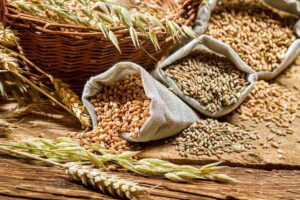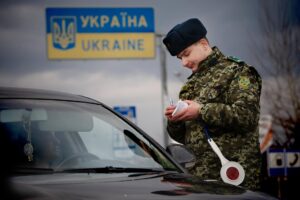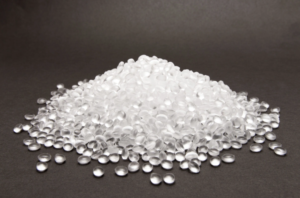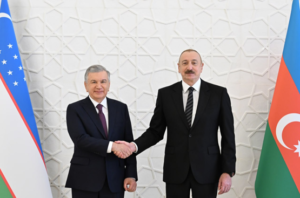
Ukrainian farmers will harvest about 56 million tons of early grain crops and 21 million tons of oilseeds in the 2025 season, according to Deputy Minister of Economy, Environment, and Agriculture Taras Vysotsky.
“In principle, in terms of early grain crops, production is expected to be around 26 million tons, which is slightly less than last year. The decrease is due to the fact that in the southeastern regions, the yield of winter wheat and rye is, unfortunately, lower due to drought,” he said on Ukrainian Radio.
Speaking about the corn harvest, which will begin in September, the deputy minister noted that the harvest is also expected to be good. At the same time, corn crops in the southeast — parts of Dnipropetrovsk, Kirovohrad, Mykolaiv, and Odesa regions — have been virtually lost. However, the main corn belt of Ukraine — Sumy, Chernihiv, Poltava, Kyiv regions and further west, despite late sowing and late emergence, thanks to precipitation and optimal temperature conditions, has produced good plants.
“Ultimately, the corn harvest will be quite good on a national scale. We can talk about about 28 million tons, which is more than last year,” Vysotsky said, adding that the final forecast figure of 56 million tons of gross grain harvest is in line with last year’s level.
According to him, farmers will receive about 21 million tons of oilseeds in 2025, which corresponds to the 2024 figure. The production structure will include slightly more sunflower and less soybeans.
The deputy minister also noted favorable purchase prices for agricultural products.
“From a farmer’s point of view, prices are high, really good. Even now, at the time of harvest, they are not falling and are holding steady. Where there were no force majeure circumstances and no losses, these prices are really worthy as a result of working the land,” he stressed.
Speaking about livestock products, Vysotsky noted the stable situation with the production of all types of meat, eggs, and milk.
He recalled that due to the cold spring, horticulture suffered losses in the 2025 season.
“Yes, there were losses in orchards, in the early group, but for late varieties, the indicators may be slightly better and at the level of last year. In the domestic market of Ukraine, a decrease in apple prices is expected in the near future. Currently, they are holding steady because last year’s harvest is being sold. The cost includes long-term storage. But starting in September, the situation will change and stabilize by the end of October. Depending on the final harvest, the prices will be completely different,“ Vysotsky said.
According to him, the situation with vegetables is similar.
”We are approaching the mass harvest (of vegetables – IF-U). We see that the price is reacting and will decline. But there are no prerequisites for it to fall below cost. Vegetables will be more affordable for consumers, but with a normal economic effect for the producer,” Vysotsky concluded.

The Cabinet of Ministers of Ukraine has decided to privatize the Odessa Port Plant (OPP), Prime Minister Yulia Sviridenko announced.
“Today, we made a decision to privatize the Odessa Port Plant. The state-owned stake will be put up for an open electronic auction with a starting price of UAH 4.5 billion,” Sviridenko wrote on Telegram following Tuesday’s government meeting.
According to her, OPP is one of the largest chemical complexes in Ukraine, which before the war produced ammonia and urea and exported fertilizers, but since 2022, its main production has been shut down.
“The plant was operating partially, providing oxygen and nitrogen for critical needs and serving as a port hub. The enterprise must resume full-scale operations. This is only possible by attracting private owners and investments. The sale of OPZ will fill the budget, create new jobs, and provide Ukrainian farmers with access to domestic fertilizers,” the prime minister emphasized.
As reported by Taras Melnychuk, representative of the Cabinet of Ministers in the Verkhovna Rada, on Telegram, the terms of sale of the state’s 99.5667% stake in the authorized capital of Odesa Port Plant JSC at an electronic auction have been approved, which, in particular, provide for: the preservation of the company’s main activities; making investments in the form of capital investments for technical re-equipment and modernization (including energy modernization) of production in the total amount of at least UAH 500 million; repayment within twelve months from the date of transfer.

The Cabinet of Ministers of Ukraine has updated the procedure for crossing the state border: men aged 18 to 22 will be able to cross the border without hindrance during martial law, Prime Minister Yulia Svyrydenko said.
“This applies to all citizens of the relevant age,” she wrote on Telegram.
According to the head of government, this decision also applies to citizens who, for various reasons, find themselves abroad. We want Ukrainians to maintain their ties with Ukraine as much as possible. The changes will take effect the day after the resolution is officially published.

Uzbekistan has abolished excise duties on imports of polyethylene granules and customs duties on primary forms of ethylene and propylene polymers. This is provided for by a decree of the President of Uzbekistan dated August 18 this year to support domestic manufacturers of high value-added ethylene and propylene polymer products.
According to the document, from September 1, 2025, to January 1, 2028, there will be a zero excise tax rate on polyethylene granules (currently 10%) that are not produced in the country and are imported according to an approved list.
Until 2028, import duties on certain primary forms of ethylene and propylene polymers (HS codes 3901 10 900 0, 3901 30, 3901 40, 3902 10 000 0), which currently stand at 5%.
At the same time, the Customs Committee and the Uzbek Agency for Technical Regulation, based on the ex officio principle, must take measures against the import of low-quality and counterfeit flexible packaging — polyethylene and polypropylene films, non-woven materials, bags, big bags, and other products.
customs duty, EXCISE DUTY, IMPORT, polymer raw materials, UZBEKISTAN

In the first half of August 2025, Ukraine increased its imports of dairy products to $14.7 million, the highest figure since the beginning of the year for similar periods. The previous record was set in the first half of March, six months ago, at $13.2 million, according to the Ukrainian Dairy Industry Association (UDIA).
The industry association noted that in monetary terms, imports increased by 30% compared to the first half of July and almost one and a half times compared to the first half of June.
In addition, in real terms, growth was recorded for almost all commodity items, except for whey, imports of which fell by a third. The largest increase, 25%, was observed in the cheese group: more than 1.8 thousand tons of this product were imported into the country. This commodity item accounts for the lion’s share of the value structure of imports (almost 85%).
As a result, the balance of exports and imports of dairy products became negative for the first time since March, at $(-4.3) million.
Analysts believe that such a significant increase in imports was largely due to the rise in domestic prices for raw milk in Ukraine, which occurred in the second half of July (+5%) and continued in August. This partially reduced the competitiveness of domestic products, making imports more attractive.
“Such dynamics affect the country’s balance of payments and require a balanced approach to pricing in the domestic dairy products market,” the SMPU concluded.

Azerbaijan’s state oil company SOCAR has begun developing an oil field in Uzbekistan. This was announced by Azerbaijani President Ilham Aliyev on August 22 at a trilateral meeting with the President of Uzbekistan and the Chairman of the Halk Maslahaty of Turkmenistan in Turkmenbashi.
“We have traditional energy cooperation with Turkmenistan. We have already entered this field with Uzbekistan. Our state oil company SOCAR has already begun developing an oil field in Uzbekistan, and the contract has already been signed,“ Aliyev said.
According to him, Azerbaijan expects to receive ”good news” about the results of the work within the next year or two. “We are all eagerly awaiting news about the discovery of a large oil field in Uzbekistan,” he said.
On July 24, Uzbekistan and the Azerbaijani state-owned company SOCAR signed a production sharing agreement (PSA) for the Ustyurt Plateau.
Investments in the project are estimated at $2 billion. Over the next five years, SOCAR, which is the project operator, will conduct 3D seismic surveys covering an area of at least 1,000 square kilometers and drill at least one exploration well. If a commercial field is discovered, the parties will proceed with its development. Reserves are estimated at up to 100 million tons of oil and 35 billion cubic meters of gas.